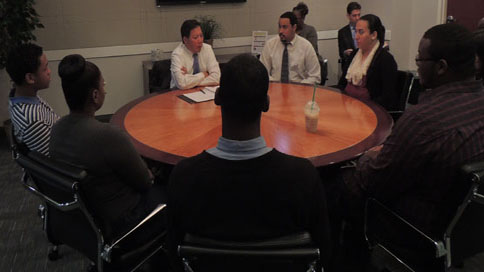
16 Oct Our mistake: Our children’s future
On a recent visit to Charlotte, U.S. Department of Labor Deputy Secretary Chris Lu spent some time meeting with a group of youth enrolled in Youth Works programs. It’s amazing, the level of insight and discussion youth people can provide when thoughtful questions are asked.
Deputy Secretary Lu’s question that generated the most discussion was, “What could we, as providers, have done differently to help them on their career journeys?” The answer was surprising: the youth were almost uniform in their agreement that they wished we had gotten to them earlier – they said we should have been sharing more information about career options in middle school. (Middle school remains a key programming void, as we can use our federal funding only to support ages 16 to 24.)
So why don’t we start earlier? The reason is simple: society’s belief that most students will figure out what they want to do in college and that it’s the job of the K – 12 system to prepare individuals for college. When did college prep replace career prep? The last 30 years have seen sweeping changes in the modern workforce and our one-size-fits-all solution was the four-year degree. We assumed – incorrectly – that a degree was the ticket to most good-paying, middle-class jobs. But if you look at the media coverage from this period, the spread of technology, the off-shoring of “dirty” manufacturing jobs and the growth of the service economy led many people to believe that this high-school-to-college model was the new norm. The unintended consequences of this unwritten policy haunt us today in the form of massive college debt, poor college-completion rates and skill gaps that constrain growth and productivity gains in many keys sectors of our economy.
But the more challenging issue remains addressing the interest gap: how do we convince youth, their parents, teachers and local leaders of the value of all forms of post-secondary attainment? We need a sustained campaign to transform the mindset that choosing an apprenticeship program or two-year degree are sub-optimal options. We need to create pathways that give young people and job-changers a choice and are designed to encourage individuals to keep learning throughout their lives.
I recently spoke to a group of education and workforce leaders from across our state and asked them how many were actively encouraging their own kids to look at workforce options that we, as workforce professionals, promote or develop. Of the 200 individuals in the room, almost no one raised a hand. We – those of us in leadership roles in business and government – are the ones keeping the system from changing. We cannot build a two-tiered system that is good for others, but not good enough for our own children.
The next few years are critical for our nation’s economic future. We must come together and create a workforce “system” that meets the high-skill requirements of employers or risk losing well-paying jobs to other nations. We must also recognize that there are multiple pathways to gaining skills and achieving success — and that they all must be equally valued and celebrated.


